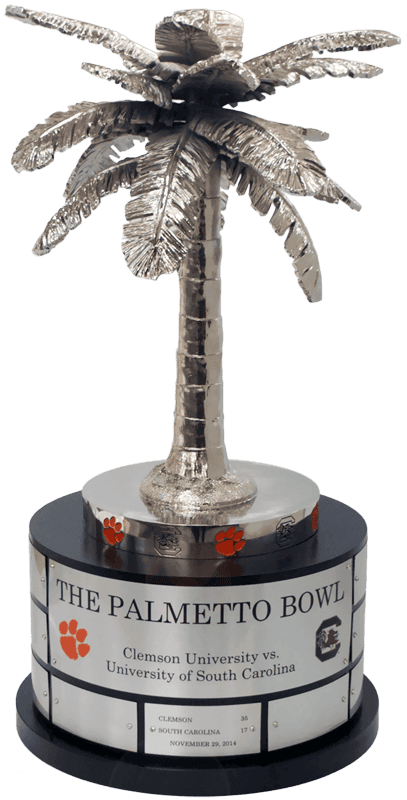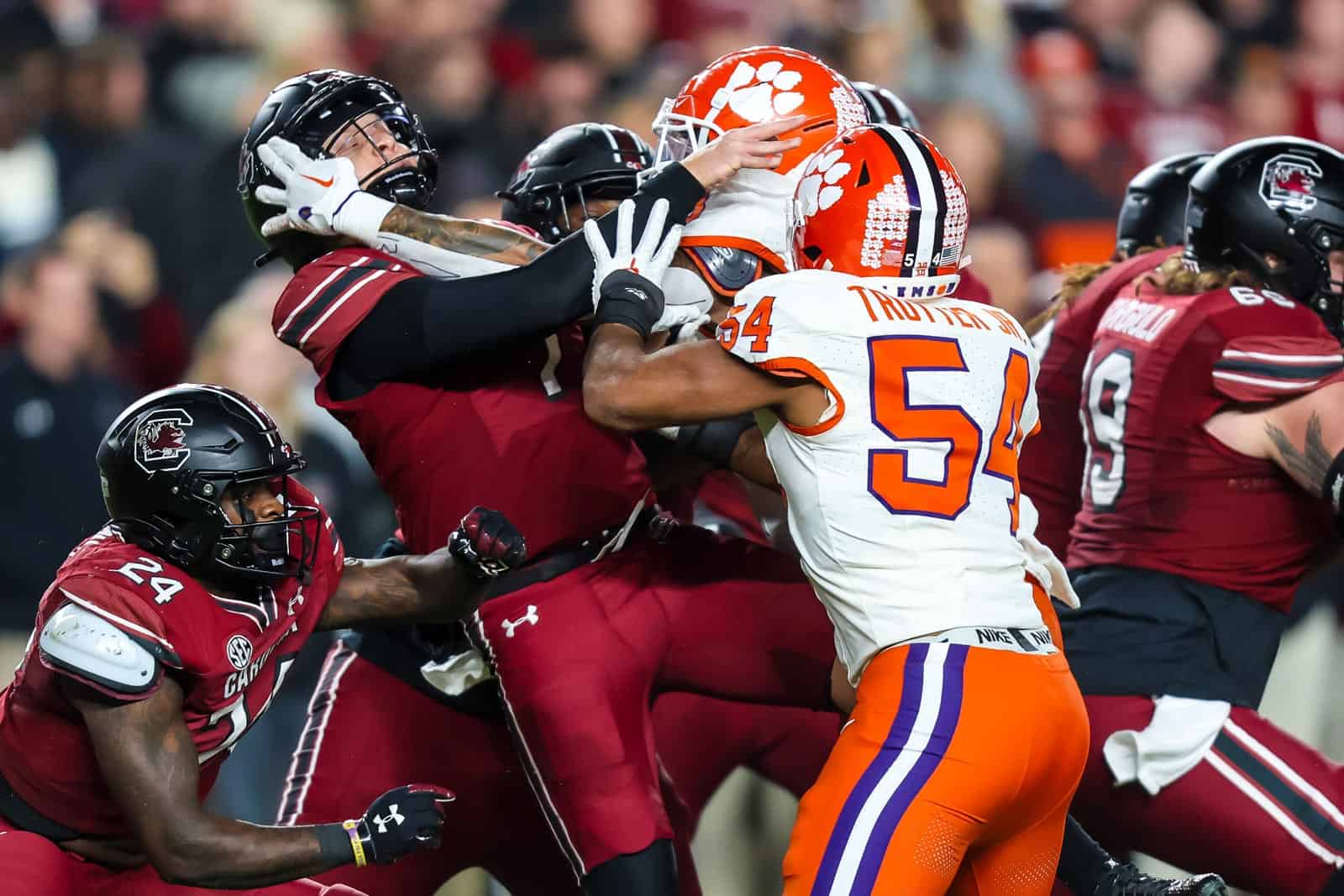Saturday, November 30, will be considered one of the most important sports days of the year in the state of South Carolina as the No. 15 South Carolina Gamecocks travel to Death Valley to take on the No. 12 Clemson Tigers in the Palmetto Bowl.
This rivalry, which was the second longest continuous rivalry and the longest non-conference rivalry in the country until 2020, was played at the State Fair of South Carolina, known as “Big Thursday” (also a state holiday), until 1960 when the games were moved to the campus stadiums.
This year, the game has possible College Football Playoff implications to go along with a history of animosity that began in the Civil War.
TALE OF THE TAPE
Series History: Clemson leads 73-43-4
Series Began: November 12, 1896
Recent History: Clemson has won eight of the last 10 meetings
Largest Victory: Clemson won 51-0 in 1900
Rivalry Trophy: Palmetto Trophy, a nod to the state being known as the “Palmetto State,” a silver Palmetto tree on a base with the names of each team and the results of each game. They had played for the Hardee’s Trophy but that was discontinued in 2014.

BAD BLOOD BEGINS
The history of the Palmetto Bowl began way back in the early 1800s when South Carolina College was founded as a whites-only school. After the Civil War, the Republican Party restructured the school to allow blacks and women to attend, much to the anger of the white Democrats who had aided the South. A few years later, when the Democrats regained control of the state government, they closed the college. That was short lived, however, as the college was reopened as the South Carolina College of Agriculture and Mechanic Arts, but was later changed back to it’s pre-Civil war name of South Carolina College.
This frustrated the farmers of the state who wanted the college to be strictly agricultural and brought about a movement to lobby the state to create a separate, agricultural school. Benjamin Tillman led the charge to create the agricultural school but was met with a lot of blowback in the state legislature, even after Thomas Green Clemson offered up his Fort Hill estate for the establishment of another college.
With the land being offered and federal funds to create colleges were made available to states, it seemed that the stars had aligned for a new school to be funded. South Carolina did take the funds, except they gave them to South Carolina College instead. That left Tillman to have to create enough public support to force the government to accept the land and create a new agriculturally focused university.
Tillman proved to be surprisingly effective at gaining support and won the right to form Clemson University thanks to a tie-breaking vote from the Lieutenant Governor at the time. Thus, Clemson University was founded in 1889, but didn’t open until 1893 as an all-white military school. However, the animosity between those who favored the “upper crust” University of South Carolina and the farmers who wanted a separate college remained and still do to this day.
GAMECOCKS, BAYONETS AND TIGER BURNING
Perhaps the most memorable and consequential meeting between South Carolina and Clemson came from the near riots of the 1902 contest, the first year the South Carolina squad was known as the “Gamecocks.”
That year, the USC students carried around a sign that depicted a Gamecock riding and steering a tiger by the tail, much to the chagrin of Tigers fans. Many fistfights broke out throughout the week leading up to the game thanks to the sign. Finally, Clemson students told USC students that if they brought that sign to the pre-game parade that they would be “in trouble.” Naturally, this made the USC students bring the sign to the parade. In response, 200-300 Clemson students marched on the students with rifles and bayonets while the USC students took up brass knuckles and pistols.
Thankfully the police were able to intervene without loss of life and a compromise was formed. The sign would be burned between the students while they screamed and cheered at each other. What a compromise! However, this led to USC students creating a tradition of constructing a paper tiger to be burned prior to each Clemson-South Carolina game and continues today. Not to be outdone, Clemson students conduct a “Cocky Funeral” prior to each game, named for USC’s mascot, Cocky.
2024 MATCHUP
The 121st meeting between the schools has the potential to change the College Football Playoff race and add another major chapter to the Palmetto Bowl History. Who will come out on top in this battle for South Carolina supremacy?
Date: Saturday, Nov. 30, 2024
Site: Memorial Stadium, Clemson, S.C.
Time: 12:00pm ET
TV: ESPN
FOOTBALL SCHEDULES
Football Schedules



Even a Fan of Georgia-Georgia Tech rivalry have lots & lots of respect for Palmetto Bowl Clemson-South Carolina rivalry.